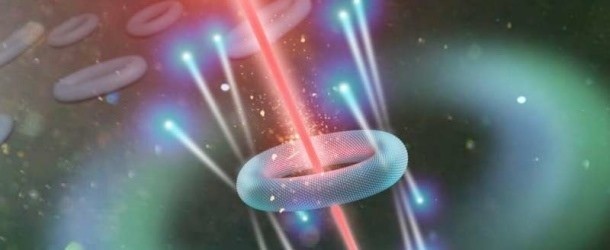Semiconductor Quantum Rings May be Advantageous in Quantum Information Storage

(Phys.org) Researchers at the Center for Nanoscale Materials (CNM), a U.S. Department of Energy (DOE) Office of Science User Facility located at DOE’s Argonne National Laboratory, have discovered the cause behind a key quantum property of donut-like nanoparticles called “semiconductor quantum rings.” This property may find application in quantum information storage, communication, and computing in future technologies.
The team assembled circular rings made out of cadmium selenide, a semiconductor that lends itself to growing donut-shaped nanoparticles. The advantage of semiconductors is that when researchers excite them with a laser, they emit photons.
The team observed this effect when breaking the perfect rotational symmetry of the donut shape, causing them to be slightly elongated. “By this symmetry breaking,” says Ma, “we can change the direction of light emission. We can thus control how photons come out of the donut and achieve coherent directional control.”
“If we can gain even greater control over the fabrication process, we could make nanoparticles with different shapes such as a clover with multiple holes or a rectangle with a hole in the center,” noted Matthew Otten, a Maria Goeppert Mayer Fellow at Argonne’s CNM. “Then, we might be able to encode more types of quantum information or more information into the nanoparticles.”



















